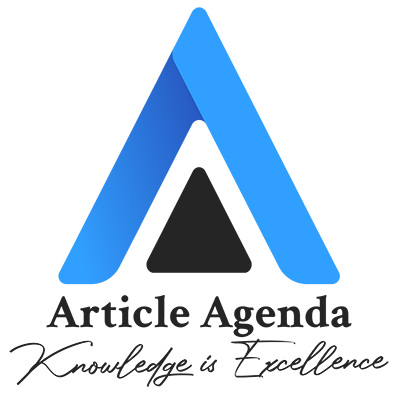Introduction to Freelancing
Freelancing has become an increasingly popular career path in recent years, offering individuals the opportunity to work on their own terms, set their own schedules, and choose the projects they’re most passionate about. As a freelancer, I’ve experienced the thrill of being my own boss and the challenges that come with managing my time effectively. In this article, I’ll dive into the advantages and obstacles of being a freelancer, explore common time management techniques, and share strategies for balancing work and personal life to maximize productivity and efficiency.
Table of Contents
- Introduction to Freelancing
- Advantages of Being a Freelancer
- Challenges of Managing Time as a Freelancer
- Common Time Management Techniques for Freelancers
- Understanding How Freelancers Spend Their Time
- Prioritizing Tasks and Setting Goals as a Freelancer
- Time Tracking Tools for Freelancers
- Balancing Work and Personal Life as a Freelancer
- Strategies for Improving Productivity and Efficiency as a Freelancer
- Conclusion: Finding the Right Balance and Maximizing Your Time as a Freelancer
Advantages of Being a Freelancer
One of the primary benefits of freelancing is the flexibility it provides. As a freelancer, I have the freedom to choose when and where I work, allowing me to create a schedule that aligns with my personal needs and preferences. This autonomy can be particularly valuable for individuals who thrive on variety, prefer to work in non-traditional environments, or have family or other commitments that require a more flexible work arrangement.
Additionally, freelancing offers the opportunity to diversify one’s income streams and work on a wide range of projects. Rather than being limited to a single employer or industry, I have the ability to collaborate with multiple clients, explore different creative avenues, and continuously expand my skill set. This versatility can lead to a more fulfilling and enriching career journey.
Read More: BBC Innovation
Challenges of Managing Time as a Freelancer
While the freedom of freelancing is undoubtedly appealing, it also comes with its own set of challenges, particularly when it comes to time management. As a freelancer, I’m responsible for juggling multiple projects, clients, and deadlines, all while maintaining a healthy work-life balance. The lack of a structured work environment and the temptation of distractions can make it difficult to stay focused and productive.
Additionally, the unpredictable nature of freelance work can create uncertainty and the need for constant adaptability. Unexpected changes in client needs, project scopes, or market demands can disrupt my carefully planned schedule, requiring me to quickly realign my priorities and adjust my time allocation accordingly.
Read More: Scarlett Johansson vs OpenAi
Common Time Management Techniques for Freelancers
To address the unique time management challenges of freelancing, I’ve found that implementing a variety of techniques can be incredibly helpful. One effective strategy is the use of time-blocking, where I designate specific time slots for different tasks or projects. This approach helps me maintain a structured workflow, minimize distractions, and ensure that I’m dedicating the necessary time and attention to each aspect of my work.
Another valuable technique is the Pomodoro method, which involves working in focused 25-minute intervals followed by short breaks. This technique helps me stay on track, avoid burnout, and maintain a consistent level of productivity throughout the day.
Read More: The Register: Enterprise Technology News and Analysis
Understanding How Freelancers Spend Their Time
As a freelancer, I’ve found that my time is often divided among several key activities:
- Client Work: This includes time spent on tasks directly related to client projects, such as research, writing, design, or development.
- Administrative Tasks: These are the behind-the-scenes responsibilities that come with running a freelance business, such as invoicing, bookkeeping, and responding to client inquiries.
- Professional Development: Investing time in learning new skills, attending industry events, or networking with other professionals can be crucial for staying competitive and expanding my expertise.
- Marketing and Prospecting: Actively seeking out new clients, creating and maintaining an online presence, and pitching for projects are essential for maintaining a steady flow of work.
- Personal Time: Carving out dedicated time for self-care, hobbies, and leisure activities is crucial for maintaining a healthy work-life balance and preventing burnout.
By understanding how I typically allocate my time, I can identify areas for improvement, streamline my workflows, and ensure that I’m dedicating the appropriate amount of attention to each aspect of my freelance career.
Read More: Copywriting Checklist: 7 Simple Steps to Dominate Your Niche
Prioritizing Tasks and Setting Goals as a Freelancer
As a freelancer, effective task prioritization and goal-setting are essential for managing my time efficiently. I begin by creating a comprehensive to-do list, categorizing tasks by importance and urgency. This allows me to focus on the most critical items first, while also ensuring that I’m not neglecting less pressing but still important responsibilities.
Additionally, I set both short-term and long-term goals to provide a clear roadmap for my freelance business. These goals might include securing a certain number of new clients, completing a specific project by a deadline, or achieving a target income level. By regularly reviewing and adjusting these goals, I can stay motivated, measure my progress, and make informed decisions about how to best allocate my time.
Read More: What Are the Data Retention Settings in GA4?
Time Tracking Tools for Freelancers
To further optimize my time management, I utilize a variety of time-tracking tools and apps. These digital solutions help me monitor my productivity, identify areas for improvement, and ensure that I’m accurately billing clients for the work I’ve completed.
Some of the time-tracking tools I’ve found particularly useful include:
- Toggl: This intuitive platform allows me to easily log and categorize the time I spend on different tasks, providing detailed reports and insights to help me understand where my time is being spent.
- Harvest: In addition to time tracking, Harvest also includes features for invoicing, expense tracking, and project management, making it a comprehensive solution for freelance business operations.
- RescueTime: This app runs in the background, automatically tracking the time I spend on various websites and applications, and providing valuable data on my digital productivity.
By leveraging these tools, I can make more informed decisions about how to structure my workday, identify and eliminate time-wasting activities, and ensure that I’m accurately billing clients for the work I’ve completed.
Read More: How to Find Low-Competition Keywords for Your SEO Campaigns
Balancing Work and Personal Life as a Freelancer
One of the most significant challenges I’ve faced as a freelancer is maintaining a healthy work-life balance. Without the structure of a traditional work environment, it can be easy to become consumed by my professional responsibilities, neglecting important personal needs and leisure activities.
To address this, I’ve implemented strategies to create clear boundaries between my work and personal life. This includes designating specific work hours, establishing a dedicated workspace (even if it’s just a corner of my home), and setting aside regular time for self-care, hobbies, and social connections.
Additionally, I’ve found it helpful to communicate my availability and boundaries with clients, setting reasonable expectations and respecting my own need for rest and rejuvenation. By prioritizing my personal well-being, I’m better equipped to maintain a high level of productivity and creativity in my freelance work.
Read More: Google Product Listing Ads: A Guide to Driving Sales
Strategies for Improving Productivity and Efficiency as a Freelancer
Alongside the time management techniques and work-life balance strategies I’ve already discussed, I’ve also found several additional approaches that have been instrumental in improving my productivity and efficiency as a freelancer.
One such strategy is the use of automation and productivity-enhancing tools. By leveraging software solutions for tasks like email management, project planning, and content creation, I’m able to streamline my workflows and free up valuable time for more strategic and high-impact activities.
Another key tactic is the implementation of regular breaks and rest periods. While it may seem counterintuitive, taking scheduled breaks has been shown to boost cognitive function, enhance creativity, and prevent burnout. I’ve found that incorporating short meditation sessions, brief walks, or even just stepping away from my desk for a few minutes can have a significant positive impact on my overall productivity and well-being.
Finally, I’ve found that cultivating a supportive network of fellow freelancers and industry peers can be an invaluable resource for improving efficiency and staying motivated. By sharing best practices, collaborating on projects, and offering mutual encouragement, I’m able to learn from others’ experiences, identify new opportunities, and maintain a strong sense of purpose and drive in my freelance work.
Conclusion: Finding the Right Balance and Maximizing Your Time as a Freelancer
In the dynamic and ever-evolving world of freelancing, the ability to effectively manage one’s time is a critical skill. By understanding the unique advantages and challenges of freelance work, implementing proven time management techniques, and prioritizing a healthy work-life balance, I’ve been able to thrive in my freelance career and maximize my productivity and efficiency.
If you’re a fellow freelancer struggling to find the right balance and make the most of your time, I encourage you to explore the strategies and tools I’ve outlined in this article. By taking a proactive approach to time management and self-care, you can unlock new levels of success and fulfillment in your freelance journey.
To learn more about how I’ve optimized my time as a freelancer, feel free to reach out to me directly. I’d be happy to share additional insights and personalized recommendations to help you take your freelance business to new heights.
Latest Post:
-
Full Stack Developer Salary
Introduction to Full Stack Development As an experienced human writer, I’m excited to dive into the topic of full stack developer salary. Full stack development has become increasingly in-demand in recent years, with companies seeking professionals who can seamlessly navigate the entire software development lifecycle. In this comprehensive article, we’ll explore the factors that influence…
-
Salary: Full Stack Developer in the United States 2024
Introduction to Full Stack Developer in the United States As a seasoned writer, I understand the growing demand for full stack developers in the United States. These versatile professionals possess a unique blend of skills that allow them to tackle a wide range of tasks, from front-end development to back-end engineering, and everything in between.…
-
Management in Organizations
As an experienced human writer, I am excited to explore the topic of management in organizations. In this comprehensive article, we will delve into the various aspects of management, its role, functions, and the importance of effective management for organizational success. Introduction to Management in Organizations Management is a critical component of any successful organization,…




